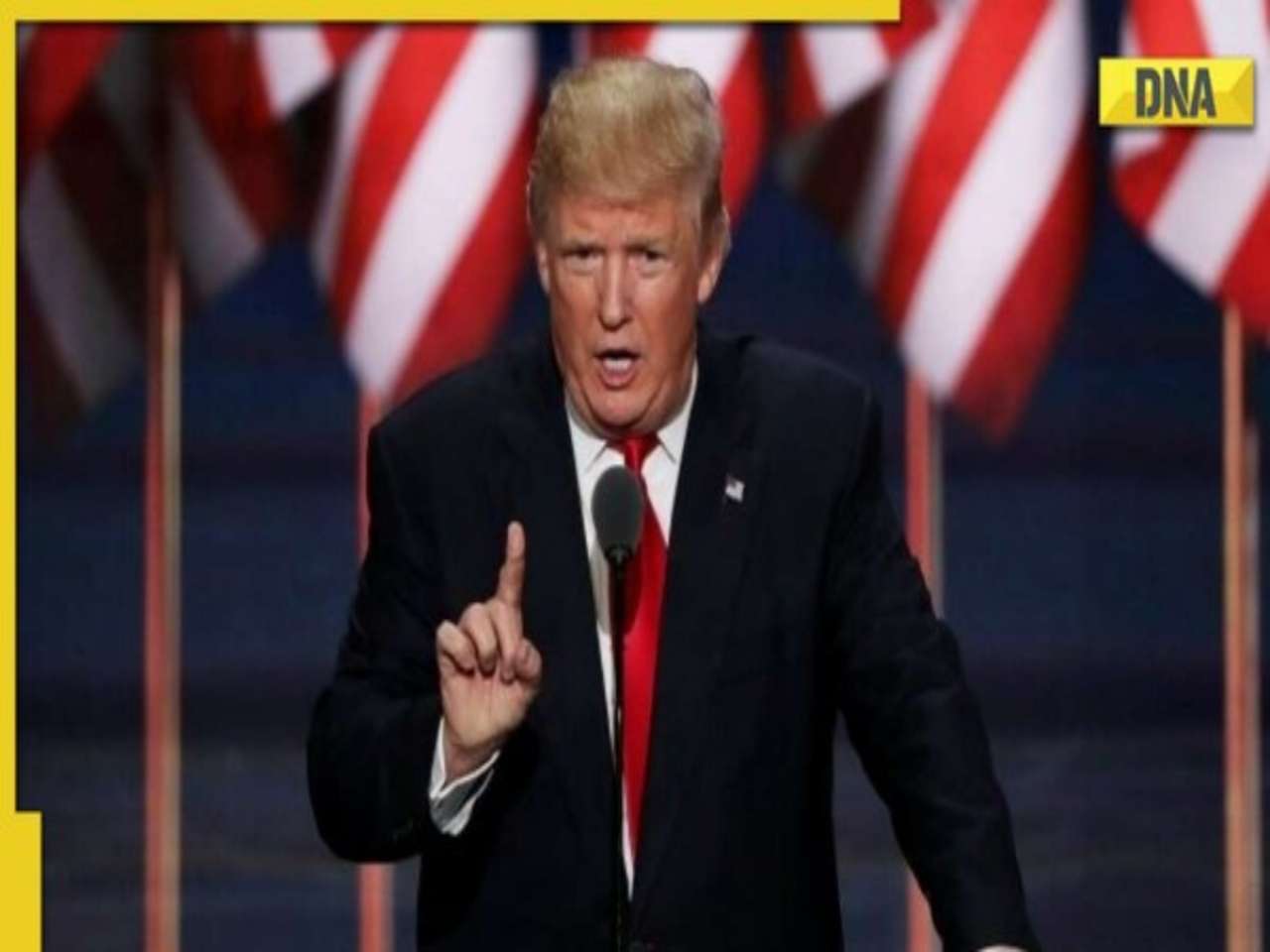Nawazuddin Siddiqui's 'Thackeray' gives an up, close and personal account of Maharashtra's only tiger - Read full review
Film: Thackeray (Biopic-Drama)
Cast: Nawazuddin Siddiqui, Amrita Rao
Direction & Screenplay: Abhijit Panse
Story: Sanjay Raut
Duration: 2 hours 17 minutes
Language: Hindi (U/A)
Critic’s Rating: 3.5/5
Story:
The film traces the rise and rise of the charismatic and controversial Shiv Sena supremo, Balasaheb Thackeray (Nawazuddin Siddiqui), who had the power to bring the Indian administration to its knees.
Review:
Like its protagonist, this film is also a rock star. Director Abhijit Panse, who had earlier directed the Marathi film 'Rege' (2014), keeps the narrative simple in this Bal ‘Tiger’ Thackeray biopic. Panse treats his protagonist like Don Corleone, The Godfather. From the ’60s until his death on November 17, 2012, this is the man everyone in Mumbai sought. You knew if you had Thackeray’s blessings, you could move freely in Maharashtra. Such was his power, charisma and reach.
To establish what a star he was, the film begins by capturing the mob frenzy outside Lucknow airport, where the Shiv Sena supremo was tried for the Babri Masjid controversy. Looking at the media and crowds thronging the place, a curious bystander asks, “Kaun aaya hai? Amitabh Bachchan aaya hai kya?” Nothing could have delivered the message better. For those of us who were born in the ’50s, Thackeray was Mumbai’s biggest superstar. Everyone knew of this person, who rose from the ranks (he was a caricaturist with Free Press Journal) and went on to become the most-powerful man in Maharashtra, at one point, he wielded his clout across India.
Coming back to the film, the director has struck gold here. He has been helped with enough and more material from writer Sanjay Raut who is a staunch Shiv Sainik. And since Balasaheb’s life reads like a bestseller, this movie plays out like a home-grown version of Francis Ford Coppola’s The Godfather (1972).
Starting his own magazine Marmik, he used it as a mouthpiece to be heard. Encouraged at home by his father Prabhodhankar and his quiet but strong wife, Meena (tai) (Amrita Rao), he himself couldn’t have envisioned his reach and power.
The man, who was content painting broad strokes with a brush, realised through this very craft that the Marathi Manoos was getting the short end of the stick in his very own state. As Mumbai was ruled by the moneyed Marwaris, Parsis, the business-savvy Gujaratis and the Shettys, the Maharashtrians were elbowed out. And this is where Thackeray came in.
He decided to be Bombay’s benefactor. He vowed he would get the Marathi man his rights. What started with a simple – “if you can’t get it, seize it,” became a strategic movement. Mumbai’s Robin Hood, who ‘stole’ from the outsiders to give to his own people, became a household phenomenon in Maharashtra. The brush was replaced with a gun, not in his hands but in the hands of who were ready to kill for him and more importantly die for him.
Such was his power that the police, administration, the central government and the common man all became his fans. Interestingly, Bal Keshav Thackeray's life provided a lot of fodder. The bespectacled man, who wore rudraksh around his wrists and drank beer each afternoon, was a paradox. He often made controversial statements. Sample this… “I’m ready to befriend the Muslims. However, if they don’t appreciate it, I’m ready to boot them out also.” Long before, others wore saffron, Maharashtra’s very own tiger had roared, “Hindustan is for the Hindus.”
No one was able to gauge what his next move would be, so his enemies (many of them who were in the most-powerful positions) could never get the better of him.
The dialogue of this film by Manoj Yadav and Arvind Jagtap is incendiary. But then a lot of it is taken from Balasaheb’s speeches that were often controversial. A lesser man may have been singed. However, Thackeray had amazing qualities. He could ignite a fight and shortly thereafter, he also provided the equipment to douse those fires.
Cinematographer Sudeep Chatterjee has captured the past as well as the present seamlessly and stylishly. The art department has done a commendable job of recreating a sepia-toned Bombay in the first half. And even the second half brings alive the exact colours, prints and backdrop which were associated with the man. Balasaheb’s animal-printed throne in Matoshree and all the other detailing has been taken into account.
Nawazuddin is first-rate. His petite physical form is quite close to that of the Sena supremo. Without too much ado, he borrows the leader’s mannerisms and his demeanour, convincing you that you are seated in Thackeray’s darbar. Amrita has lesser scope. However, she needs to be complimented for not straying out of character or ever attempting to draw attention to herself. Looking beautiful, she plays the perfect foil to her famous spouse.
Verdict: Don’t miss Thackeray. It’s like a gym session that gives you a high. You can actually feel the adrenaline pumping, many a time during the film.
![submenu-img]() This actor made Sharmila Tagore forget her lines, once did film for Rs 100, could never be a superstar because..
This actor made Sharmila Tagore forget her lines, once did film for Rs 100, could never be a superstar because..![submenu-img]() Volkswagen Taigun GT Line, Taigun GT Plus launched in India, price starts at Rs 14.08 lakh
Volkswagen Taigun GT Line, Taigun GT Plus launched in India, price starts at Rs 14.08 lakh![submenu-img]() Donald Trump accused of corrupting 2016 US presidential elections, prosecutors say he...
Donald Trump accused of corrupting 2016 US presidential elections, prosecutors say he...![submenu-img]() Taiwan hit by dozens of earthquakes, largest measuring 6.3 magnitude, no major damage reported
Taiwan hit by dozens of earthquakes, largest measuring 6.3 magnitude, no major damage reported![submenu-img]() Mumtaz urges to lift ban on Pakistani artistes in Bollywood: ‘Woh log hum logon se...'
Mumtaz urges to lift ban on Pakistani artistes in Bollywood: ‘Woh log hum logon se...'![submenu-img]() DNA Verified: Is CAA an anti-Muslim law? Centre terms news report as 'misleading'
DNA Verified: Is CAA an anti-Muslim law? Centre terms news report as 'misleading'![submenu-img]() DNA Verified: Lok Sabha Elections 2024 to be held on April 19? Know truth behind viral message
DNA Verified: Lok Sabha Elections 2024 to be held on April 19? Know truth behind viral message![submenu-img]() DNA Verified: Modi govt giving students free laptops under 'One Student One Laptop' scheme? Know truth here
DNA Verified: Modi govt giving students free laptops under 'One Student One Laptop' scheme? Know truth here![submenu-img]() DNA Verified: Shah Rukh Khan denies reports of his role in release of India's naval officers from Qatar
DNA Verified: Shah Rukh Khan denies reports of his role in release of India's naval officers from Qatar![submenu-img]() DNA Verified: Is govt providing Rs 1.6 lakh benefit to girls under PM Ladli Laxmi Yojana? Know truth
DNA Verified: Is govt providing Rs 1.6 lakh benefit to girls under PM Ladli Laxmi Yojana? Know truth![submenu-img]() Remember Abhishek Sharma? Hrithik Roshan's brother from Kaho Naa Pyaar Hai has become TV star, is married to..
Remember Abhishek Sharma? Hrithik Roshan's brother from Kaho Naa Pyaar Hai has become TV star, is married to..![submenu-img]() Remember Ali Haji? Aamir Khan, Kajol's son in Fanaa, who is now director, writer; here's how charming he looks now
Remember Ali Haji? Aamir Khan, Kajol's son in Fanaa, who is now director, writer; here's how charming he looks now![submenu-img]() Remember Sana Saeed? SRK's daughter in Kuch Kuch Hota Hai, here's how she looks after 26 years, she's dating..
Remember Sana Saeed? SRK's daughter in Kuch Kuch Hota Hai, here's how she looks after 26 years, she's dating..![submenu-img]() In pics: Rajinikanth, Kamal Haasan, Mani Ratnam, Suriya attend S Shankar's daughter Aishwarya's star-studded wedding
In pics: Rajinikanth, Kamal Haasan, Mani Ratnam, Suriya attend S Shankar's daughter Aishwarya's star-studded wedding![submenu-img]() In pics: Sanya Malhotra attends opening of school for neurodivergent individuals to mark World Autism Month
In pics: Sanya Malhotra attends opening of school for neurodivergent individuals to mark World Autism Month![submenu-img]() DNA Explainer: What is cloud seeding which is blamed for wreaking havoc in Dubai?
DNA Explainer: What is cloud seeding which is blamed for wreaking havoc in Dubai?![submenu-img]() DNA Explainer: What is Israel's Arrow-3 defence system used to intercept Iran's missile attack?
DNA Explainer: What is Israel's Arrow-3 defence system used to intercept Iran's missile attack?![submenu-img]() DNA Explainer: How Iranian projectiles failed to breach iron-clad Israeli air defence
DNA Explainer: How Iranian projectiles failed to breach iron-clad Israeli air defence![submenu-img]() DNA Explainer: What is India's stand amid Iran-Israel conflict?
DNA Explainer: What is India's stand amid Iran-Israel conflict?![submenu-img]() DNA Explainer: Why Iran attacked Israel with hundreds of drones, missiles
DNA Explainer: Why Iran attacked Israel with hundreds of drones, missiles![submenu-img]() This actor made Sharmila Tagore forget her lines, once did film for Rs 100, could never be a superstar because..
This actor made Sharmila Tagore forget her lines, once did film for Rs 100, could never be a superstar because..![submenu-img]() Mumtaz urges to lift ban on Pakistani artistes in Bollywood: ‘Woh log hum logon se...'
Mumtaz urges to lift ban on Pakistani artistes in Bollywood: ‘Woh log hum logon se...'![submenu-img]() Not Kiara Advani, but this actress was first choice opposite Shahid Kapoor in Kabir Singh, she rejected because...
Not Kiara Advani, but this actress was first choice opposite Shahid Kapoor in Kabir Singh, she rejected because...![submenu-img]() Meet beauty queen, who worked with Deepika, Ranveer, quit films after big flop, is now married to son of billionaire
Meet beauty queen, who worked with Deepika, Ranveer, quit films after big flop, is now married to son of billionaire![submenu-img]() Chunky Panday reacts to Ananya Panday's rumoured relationship with Aditya Roy Kapur: 'How dare...'
Chunky Panday reacts to Ananya Panday's rumoured relationship with Aditya Roy Kapur: 'How dare...'![submenu-img]() IPL 2024: Yashasvi Jaiswal, Sandeep Sharma guide Rajasthan Royals to 9-wicket win over Mumbai Indians
IPL 2024: Yashasvi Jaiswal, Sandeep Sharma guide Rajasthan Royals to 9-wicket win over Mumbai Indians![submenu-img]() IPL 2024: How can RCB still qualify for playoffs after 1-run loss against KKR?
IPL 2024: How can RCB still qualify for playoffs after 1-run loss against KKR?![submenu-img]() CSK vs LSG, IPL 2024: Predicted playing XI, live streaming details, weather and pitch report
CSK vs LSG, IPL 2024: Predicted playing XI, live streaming details, weather and pitch report![submenu-img]() RR vs MI: Yuzvendra Chahal scripts history, becomes first bowler to achieve this massive milestone in IPL
RR vs MI: Yuzvendra Chahal scripts history, becomes first bowler to achieve this massive milestone in IPL![submenu-img]() 'Yeh toh second tier ki bhi team nhi': Ramiz Raja slams Babar Azam and co. after 3rd T20I loss vs New Zealand
'Yeh toh second tier ki bhi team nhi': Ramiz Raja slams Babar Azam and co. after 3rd T20I loss vs New Zealand![submenu-img]() Mukesh Ambani's son Anant Ambani likely to get married to Radhika Merchant in July at…
Mukesh Ambani's son Anant Ambani likely to get married to Radhika Merchant in July at…![submenu-img]() India's most expensive wedding costs more than weddings of Isha Ambani, Akash Ambani, total money spent was...
India's most expensive wedding costs more than weddings of Isha Ambani, Akash Ambani, total money spent was...![submenu-img]() Meet Indian genius who lost his father at 12, studied at Cambridge, took Rs 1 salary, he is called 'architect of...'
Meet Indian genius who lost his father at 12, studied at Cambridge, took Rs 1 salary, he is called 'architect of...'![submenu-img]() Earth Day 2024: Google Doodle features aerial photos of planet's natural beauty, biodiversity
Earth Day 2024: Google Doodle features aerial photos of planet's natural beauty, biodiversity![submenu-img]() Meet India's first billionaire, much richer than Mukesh Ambani, Adani, Ratan Tata, but was called miser due to...
Meet India's first billionaire, much richer than Mukesh Ambani, Adani, Ratan Tata, but was called miser due to...







































)




)
)
)
)
)
)